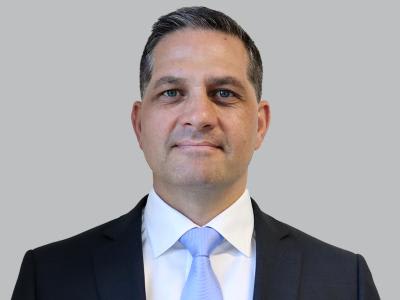Have we reached a tipping point in Australian aged care?
 With the new Aged Care Act now in effect, providers are caught between intense regulatory scrutiny, increased expectations from residents and rising operational costs.
With the new Aged Care Act now in effect, providers are caught between intense regulatory scrutiny, increased expectations from residents and rising operational costs.
Technology can be a powerful solution to these challenges. However, it's never as simple as purchasing the right tools. You need to carefully plan how it will integrate with your existing systems. That is the only way to unlock its full potential.
How does an integrated ERP address current challenges within aged care?
Whether you’re providing support at home, operating a registered residential aged care facility or delivering medical services within a retirement community, you are responsible for ensuring clients receive appropriate care and medicines.
Some of your daily challenges might include:
- Rostering the right staff at the right time.
- Ensuring payments apply the correct award rates.
- Meeting complex reporting requirements.
How much easier would your life be with internal IT systems that could:
- Communicate seamlessly.
- Automatically adapt to regulatory changes.
- Deliver critical data precisely when you need it.
Under the new aged care laws, residential aged care facilities must provide an average of 215 care minutes per resident. This includes 44 minutes with a Registered Nurse (RN), and an RN must be on site 24/7.
This new mandate represents a monumental challenge for many providers. Qualified staff remain scarce, and this change adds pressure on an already tight labour market.
High turnover rates and staged Fair Work Commission pay rises compound these pressures, making labour both your largest cost and greatest risk.
Conquer the labour challenge with intelligent rostering
Modern cloud-based systems for payroll, rostering, financial management, and client care deliver improved efficiency, enhanced compliance, and superior cost control.
Instead of battling with manual spreadsheets or clunky software, enjoy the benefits of a modern platform:
- Automate data tracking
Seamlessly monitor care minutes, automatically flagging potential non-compliance before it happens. This provides a clear audit trail and frees up management time.
- Optimise skill deployment
Intelligently deploy your workforce by matching resident needs (as per AN-ACC classifications) with the right mix of Registered Nurses and personal care workers, ensuring quality of care.
- Control workforce expenses
Integrated systems allow payroll, HR, and rostering to share real-time data, making it easy to track staff hours, skills, and locations. Overtime penalties become visible in advance, enabling managers to optimise workforce allocation and control expenses.
- Reduce administrative burden
Automate payroll integration, accounting for the new multi-stage award wage increases, reducing errors and saving countless hours for your finance and HR teams. Automated data flows support timely and accurate billing, ensuring that services are delivered within funding constraints.
The Aged Care Act 2024 introduced significantly increased compliance and reporting obligations. Your ability to demonstrate compliance and respond effectively to audits hinges on robust, integrated solutions.
Particularly for providers operating across state lines, a centralised system is non-negotiable.
Master regulatory complexity
A holistic digital transformation can enable real-time reporting and assist providers in delivering these reports.
A unified platform allows you to:
- Centralise compliance management
Configure the system with the specific legislative requirements for each state, from resident contracts to disclosure statements. This ensures consistency and reduces the risk of costly breaches.
- Standardise financial reporting
Gain a single, clear view of your financial health across all facilities and states, simplifying financial management and reporting to boards and regulators.
- Streamline a continuum of care
As you integrate in-home care services under the new Support at Home Program, an ERP can manage the different funding streams, client records, and service delivery models within one ecosystem, rather than bolting on another disconnected system.
Rising building and maintenance costs, general inflation, and new liquidity requirements under the proposed Aged Care Financial and Prudential Standards are eroding already thin margins. For retirement village operators, public scrutiny over fees has further constrained profitability.
Fortify your bottom line
In a sector with tight margins, every efficiency counts. An ERP is a great engine for financial control. Plus, the elasticity of cloud-based systems allows companies to only pay for what you use. There is no need for an upfront technology investment in hardware you might not even use.
- Leverage procurement power
Centralise procurement across your facilities to gain a consolidated view of spending. This data can empower you to negotiate better terms with suppliers, from construction materials for new developments to medical supplies, mimicking the economies of scale enjoyed by larger operators.
- Manage RADs and DAPs with confidence
Recent changes to the Refundable Accommodation Deposit (RAD) and Daily Accommodation Payment (DAP) are complex and involve daily calculations on rates that may change quarterly.
A modern financial module can accurately manage resident accommodation payments, automatically calculating and applying changes like biannual DAP indexing and the 2% RAD retention. This provides financial clarity and ensures you meet your prudential obligations without locking up excessive capital.
What are the core IT systems and software solutions needed in aged care?
The unique regulatory framework in Australia means that every sub-sector under the broader ‘Health’ umbrella has distinct and specialised requirements. This means that an all-in-one solution that caters to general business needs quite well, may not have all of the desired functionality for each specific sector. This has led to the emergence of vendors specialising in market-leading software tailored to individual sectors, such as non-profits, NDIS providers, public hospitals, and residential aged care providers. Consequently, aged care providers will typically need multiple systems to meet all of their needs. ![]()
Essential software systems in aged care
There are four fundamental systems required for effective operation within aged care settings:
- ERP (Enterprise Resource Planning)
Manages financial processes and supports overall operational efficiency.
- Payroll and HR
Facilitates staff management and ensures compliance with award rates and employment regulations.
- Rostering solutions
Enables the scheduling of staff, ensuring that regulatory requirements, such as care minutes and registered nurse coverage, are consistently met.
- CMS (Client Management System)
Tracks resident care, medication management, and case management activities.
Additional systems to consider
Depending on organisational requirements, further systems may be beneficial, including:
- CRM and marketing platforms to enhance client engagement and outreach.
- Point of sale software for transactional processes.
- Travel and transport scheduling solutions.
- Bed booking systems.
- Cleaning management platforms.
Integration is the most critical element
Requirements for IT systems can differ significantly based on the size of the organisation and the nature of services delivered. The truly important factor is the integration of these systems. They must be able to speak to each other, have a common database, a common set of nomenclature across your systems to deliver the right information to the right systems at the right times, and support any reporting requirements.
Whilst each of the four fundamental systems provide a wealth of data within themselves, aged care providers that require multiple systems need to consider how these systems will integrate with each other to enable seamless data exchange and normalisation. The end result should be a single reporting solution with data from the various systems.
To achieve effective integration, middleware software acts as the ‘software glue’ to connect several applications together, enabling them to communicate, share data and work together seamlessly.
Key benefits of middleware:
Middleware improves operational efficiencies, reduces manual entry, removes duplication of effort, simplifies development, enhances security, and increases agility. Common tasks like data translation, authentication, and message queuing are core features of middleware solutions, and critical when systems are integrated.
- Seamless integration and data-flow, allowing real-time data exchange.
- Efficiently develop a standard way for applications to communicate.
- Enhances security.
- Improves reliability by acting as a buffer to store and forward messages.
- Greater agility by enabling new applications to integrate more quickly.
- Lowers the cost of integration and maintenance.
Why should aged care providers invest in technology?
Many health providers and aged care facilities still rely on legacy systems. These are often built on outdated technology, sometimes by small vendors.
Legacy systems limit flexibility, hinder updates, and may not meet modern security standards, raising concerns about data privacy and compliance. They also often lack integration with other critical platforms like payroll or client management systems. This makes them complex to support and they can't provide real-time reporting.
In this environment, continuing with disjointed, legacy IT systems is more than inefficient. It is a direct threat to your sustainability.
Enhanced care quality
Technology should never replace the human element of care, but it can profoundly enhance it.
By integrating operational systems with clinical applications, you can:
Create a single source of truth
Link electronic health records and medication management apps directly to your central ERP. When a resident’s care plan is updated, this information is instantly available. This reduces the risk of errors and ensures care is always based on the latest information.
Gain deeper insights
Connect resident data with financial and operational data to understand the true cost and quality of care. This allows you to make informed decisions about service enhancements and new business models, such as partnerships with allied health professionals.

Benefit from our holistic approach to improving IT systems and operational technology
There are clear benefits to a holistic approach to any digital transformation project.
System selection support from expert advisers
External advisers can coordinate with multiple vendors, manage RFPs, and act as a central point of contact for evaluating and integrating new systems.
A good adviser will also bring experience from past projects and advise clients on the impact of risks that may arise during system implementation. They will typically provide deep knowledge on deployment methodologies to deliver the best outcome for the project.
For example, at RSM we provide extensive support throughout the process. We will analyse your existing systems and work with you to understand your requirements. We can then assess how well your existing technology aligns with those needs.
We always suggest solutions that are appropriate for your size and operational complexity. This helps smaller providers avoid unnecessary expenses.
We will also look at the reliability of vendors and the quality of support they offer. Where appropriate, we will select and implement systems that scale with growth, promoting automation and efficiency as your business develops. This can help ensure the selected solutions remain sustainable and flexible over time.
Change management support
Change fatigue is a significant concern, especially for larger organisations that may be hesitant or slow to adopt new processes or systems. Managing this requires a gradual, well-communicated approach to change.
It may be tempting to ‘rip off the band-aid’ and attempt too much change, without considering uptime of key systems. This is extremely risky in care contexts, as poorly implemented changes could lead to outages and disruptions in resident care.
A holistic, phased approach that prioritises urgent needs and builds towards ‘Nirvana’ over time helps organisations avoid overwhelming staff and ensures sustainable progress.
Effective change management includes not just technical deployment but also:
- Supporting staff through transitions.
- Addressing capacity constraints.
- Ensuring key personnel are available for project input.
Outsourced IT function and backfilling
Outsourced IT options include backfilling staff to support project delivery, ensuring key internal personnel can focus on system implementation without disrupting daily operations.
Setting up a national help desk for ongoing support across different IT components is another option. This can further streamline issue resolution and vendor management.
When deploying key systems for an organisation, one of the essential roles is Project Management. Ensuring that the project is managed effectively and communicated throughout the business is one of the key factors to ensure the project is delivered on time and within budget.
Data privacy and risk management
Ensuring data security and privacy is of utmost importance, especially when handling sensitive personal medical information. Organisations are required to implement comprehensive safeguards to prevent unauthorised access, data breaches, and third-party risks. This responsibility extends to verifying that external vendors and partners maintain high standards of data protection and remain compliant with applicable privacy regulations.
Beyond preserving privacy, organisations must also ensure the reliability of IT services. Minimising downtime is essential for continuous and safe operations, particularly in settings where uninterrupted access to systems and information is critical for resident care. Proactive system monitoring and routine maintenance significantly mitigate the risk of service disruptions.
Your path forward
We know the challenges you face are not abstract business problems. They are deeply human issues affecting the wellbeing of residents and the dedicated staff who care for them.
As you investigate solutions, it can help to triage the challenges you aim to address based on their urgency. Consider what resources you currently have available and which you will need to outsource.
The future of aged care will be defined by those who invest intelligently, implement wisely and emerge stronger.
RSM can help you move forward with confidence.






